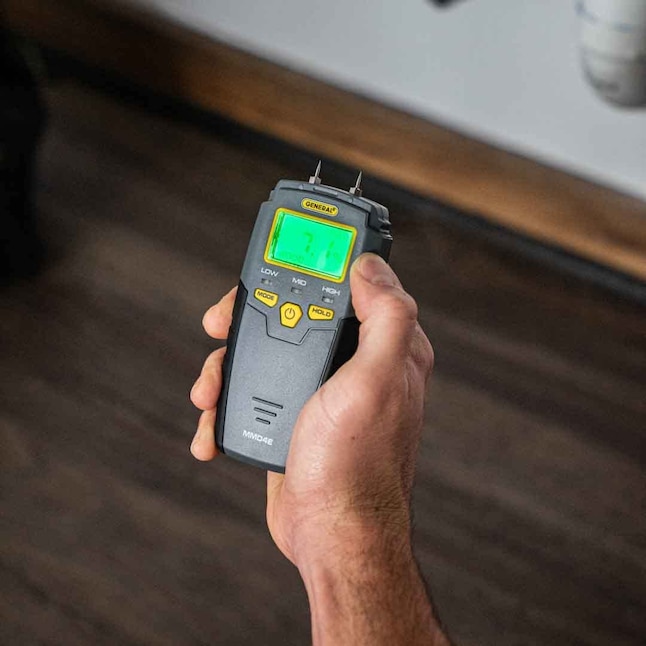Delve Into the Globe of Moisture Meters: Everything You Required to Know
In the world of moisture meters lies a globe of accuracy and functionality that often goes unnoticed. These tools, while seemingly simple, hold a wide range of information that can dramatically impact different sectors and applications. Understanding exactly how moisture meters run, the various types offered, and their varied usages can clarify their value in making certain high quality and effectiveness. By discovering the intricacies of moisture meters, one can discover a beneficial device that transcends mere measurement, providing understandings that can make a significant distinction in numerous fields.
How Moisture Meters Work
Moisture meters operate by measuring the electric conductivity or capacitance of products to establish the dampness material existing. These meters are invaluable devices throughout different industries, including agriculture, building and construction, and woodworking. By making use of various techniques such as pin-type or pinless modern technology, wetness meters offer accurate analyses that help professionals make notified decisions.
Pin-type dampness meters function by inserting the sharp pins right into the material being tested. The electric conductivity in between the pins is after that measured, with greater moisture degrees resulting in increased conductivity. Moisture Meter. On the various other hand, pinless moisture meters make use of electromagnetic signals to check a larger area without creating any type of damages to the material's surface area. These meters are optimal for promptly examining moisture levels in huge areas or completed items.
No matter of the method utilized, moisture meters play an essential function in protecting against issues such as mold development, architectural damages, or product problems brought on by excess dampness. Understanding exactly how these meters work is crucial for ensuring the high quality and stability of products in numerous applications.
Kinds of Moisture Meters
Offered the crucial function wetness meters play in different markets, it is vital to recognize the various kinds readily available to specialists for properly analyzing wetness degrees - Moisture Meter. There are mostly two primary kinds of dampness meters: pin-type and pinless dampness meters

On the various other hand, pinless moisture meters make use of electro-magnetic sensor plates to check a larger location of the material without creating any damages. This type is ideal for rapidly scanning large locations and is commonly utilized you could try these out for flooring, wall surfaces, and ceilings. Pinless meters are convenient for taking readings on completed surface areas without leaving any type of noticeable marks.
Both kinds of moisture meters have their advantages and are chosen based upon the certain needs of the work handy. Comprehending the differences between these kinds is important for professionals to make exact wetness assessments.
Applications Across Industries
Building and construction experts count on moisture meters to examine the wetness levels in structure materials like drywall, timber, and concrete, which is critical for preserving structural stability and avoiding concerns like rot or mold. The flooring market makes use of moisture meters to measure the moisture material in subfloors prior to setting up different floor coverings, preventing pricey problems due to excess wetness. In the food market, dampness meters are utilized to monitor and control moisture degrees in items such as grains, nuts, and dried out fruits to preserve freshness and top quality.
Tips for Utilizing Moisture Meters
Use the wetness meter's calibration settings to ensure precise readings when measuring the wetness material in numerous products. Calibration is crucial for the proper performance of a moisture meter. Before each usage, it is suggested to examine and adjust the discover here calibration setups according to the particular product being checked. Additionally, make certain the meter is readied to the proper wetness array for the product you are determining to obtain the most accurate results.
When utilizing a pin-type moisture meter, place the pins to the suitable depth recommended for the material being evaluated. This makes sure that the wetness readings are taken from the correct depth within the product, providing an extra accurate depiction of its wetness content. For pinless moisture meters, remember to preserve proper call with the material's surface to obtain dependable readings.
Regularly check and replace the batteries in your dampness meter to stop imprecise analyses because of low power. Store the meter in a safe and dry place when not in use to extend its life-span and preserve its precision. By adhering to these ideas, you can make the most of the efficiency of your wetness meter and obtain specific dampness material measurements throughout different materials.
Upkeep and Calibration
To make sure the precision of wetness web content dimensions, normal upkeep and calibration of the dampness meter are essential steps in its proper functioning. Calibration adjusts the moisture meter to ensure that it provides consistent and dependable results.
Calibration must be carried out periodically, specifically if the wetness meter is used regularly or in vital applications where precise dimensions are needed. By adjusting the moisture and keeping meter frequently, users can rely on the accuracy of the wetness content dimensions obtained.
Final Thought

Finally, wetness meters play a crucial function in numerous industries by precisely gauging the moisture content of products. Recognizing how these gadgets function, the various types available, and appropriate upkeep and calibration are essential for obtaining trustworthy outcomes. Whether in construction, agriculture, or manufacturing, making use of moisture meters assists make Visit Your URL sure quality assurance and performance in procedures.

In final thought, moisture meters play an essential role in various sectors by properly gauging the wetness material of materials.